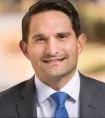This article authored by Withers' Michael Rueda regarding today's youth soccer landscape was initially published by Sports Business Journal on December 08, 2017. Michael Rueda is the head of the U.S. sports practice at Withers Bergman LLP and regularly advises athletes, coaches, teams and owners.
The youth soccer landscape today is drastically different from when I was a youth player in the mid-1990s hoping to get recruited to play college soccer and eventually turn pro.
Today, the most elite youth soccer players in the U.S. train and play within the U.S. Development Academy (DA), the top-tier youth league formed in 2007 that includes MLS academies and other top clubs across North America. MLS academies are youth soccer academies sponsored and run by MLS clubs. MLS academies generally operate across six age groups (U12, 13, 14, 15, 17, 19) striving to identify, develop and produce elite youth soccer players.
MLS clubs can sign academy players to
professional contracts without subjecting them to the MLS draft if the player was a member of a
club's youth academy for at least one year and meets certain
training and retention requirements. Players joining MLS through this mechanism are known as
Homegrown Players. Academy players are not required to spend any
time in college before a MLS club can
sign them to a professional contract. Since 2007, MLS has signed approximately 180
Homegrown
Players. In 2017, MLS signed 17 Homegrown
Players.
The DA, MLS academies and Homegrown Players created a system that did not exist 20 years ago. U.S. youth players can move from an MLS youth academy straight to a professional contract with MLS. However, there is a sense of frustration among certain academy players and parents. When top academy players are not offered a professional contract by their MLS club, some feel that the club is treating the player unfairly by not letting him continue his development with the club. College soccer being too significant a step down in competition and training to risk the time.
From a development perspective, many professional and national team coaches have criticized the current college season as being too short to adequately develop players for the next level. In 2016 Division I soccer coaches campaigned to expand the soccer season across a full academic year. The coaches argued that, while keeping the same number of games, a full academic year season would reduce missed class time, provide players with appropriate rest and recovery time, and move the championship into a better season. Currently, the NCAA championship is played in December.
Instead of college, some academy players have sought
opportunities to try out with clubs outside of the U.S. before
graduating from their MLS academy. They
hope that the analysis of a new club will be different and they
will become the next Christian Pulisic. Some of these tryouts have
even been arranged by non-DA U.S. youth clubs in
exchange for a signed representation contract essentially making
that youth club the player's agent. It's important to note
that American youth soccer clubs aren't compensated for the
development of youth players who go on to sign professional
contracts, even though FIFA regulations
allow it. The U.S. Soccer Federation and MLS do not enforce these regulations in the
U.S.
What some players and parents fail to see is that for MLS clubs an academy is an investment in the development of players. Many MLS academies pay an academy player's full cost. As such, MLS academies restrict their players from shopping themselves around to other professional clubs. The restrictions help protect the club's investment in the player. When players violate these rules, MLS clubs have penalized them by, for example, suspending them for portions of the DA season.
A significant hurdle that some players and parents are seemingly unaware of is that in 2001, FIFA implemented Article 19 of FIFA's Regulations on the Status and Transfer of Players, which bans international transfers of players under the age of 18 except under limited circumstances. Transfers in violation of this prohibition lead to penalties on both player and club. For example, in 2014 U.S. teenager Ben Lederman was forced to leave FC Barcelona after FIFA found the club had violated Article 19. Lederman's entire family had moved to Barcelona from California in 2011 but FIFA determined that the move was not for non-soccer reasons. Lederman had to leave the club and spend the rest of 2015 and 2016 at IMG Academy in Florida playing for U.S. youth national teams. Lederman, now 17, received a Polish passport in the fall of 2016 and returned to Barcelona in 2017 as a naturalized EU citizen.
While the desire to turn pro is understandable, the rush of certain academy players to test the waters outside the U.S. may not be in their best interest, except in rare cases. Elite youth players are in the best possible place they could be in, in the U.S. The U.S. youth academy system, in its current version, is a decade old. While it continues to improve upon the model each year, MLS is generally getting things right and some faith should be placed in MLS academies to develop the next generation of pros. College soccer is also not the place it was 20 years ago. Top college programs are professionally run institutions with deep resources. The quality of play at top college programs has arguably improved directly as a result of MLS academies themselves. Thanks to the DA, academy players arrive at college having played more and better quality soccer than the players that preceded them. MLS will be there for some of these youth and college players and with the growth of USL and the NASL, U.S. Soccer's lower professional tiers, additional opportunities to play and develop post-college will be available as well.
The content of this article is intended to provide a general guide to the subject matter. Specialist advice should be sought about your specific circumstances.

